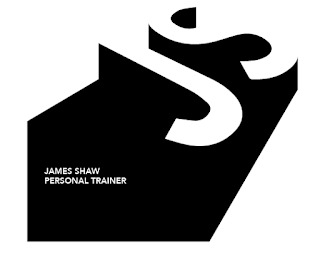End of Year Show Design Competition - Prize £750
The Brief
We want Leeds College of Art students to design
the concept and promotional materials for our
annual end of year show. This will include the
Foundation End of Year show which takes place 18
- 25 May 2017, and the Degree End of Year show
which takes place on 9 - 15 June 2017.
The shortlisted entries will work with design
agency Peter & Paul to develop their concepts,
and have the opportunity to present the final
designs to our Senior Management Team. The
winning design will be applied to a suite of
promotional materials produced by our marketing
team.
The Concept
The concept should reflect the essence and
purpose of our end of year show - namely
showcasing the hard work and talent of all of our
exhibiting students.
The end of year show is a College-wide exhibition
and includes higher education, further education
and short courses. The design needs to be
representative of all these courses.
Competition entries must be innovative and have
a strong visual identity. The concept should be as
creative and eye-catching as possible, and
imagery/photography can be included. The Leeds
College of Art logo must be visible and legible on
every design.
Considerations
This is a large and exciting project that requires
professionalism and an understanding of how to
respond innovatively to a creative brief. The
project offers significant publicity and is likely to
appear in regional and national press.
We will accept submissions from individuals or
small groups. Groups can be made up of students
working across different courses at Leeds College
of Art.
The competition is organised by the marketing
department; the winning students should expect
to work closely with agency Peter & Paul and the
marketing department for the duration of the
project.
The winning work may be used as a piece of
graded coursework, by prior consultation with
your tutor.
Mandatory Requirements
A0 Poster
For the poster towers in and around the city
centre and Hyde Park, Headingley etc. Poster
must be bright and bold to stand out from the
‘noise’ created by other advertising.
Private View Email Header
A high quality digital invite sent out mainly to
industry contacts/friends to promote the show.
Animation and interactive elements are welcome.
Flyer
A6 double sided flyer to distribute around bars
and venues in Leeds.
Online Graphics
Several graphics for our website, social media
channels and online advertising.
Publication Adverts
Several adverts for printed publications.
External Signage Blenheim Walk
Signage covers the four sides of the brick folly,
each panel measures 2260mm x 4030mm.
Exhibition Guide
A printed guide handed to visitors at Blenheim
Walk to guide them round the exhibition.
External Signage Vernon Street
Usually includes 3 or 4 pieces of external signage.
What is Leeds College of Art?
Founded in 1846, Leeds College of Art is one of
the few remaining independent HE art
institutions, and the leading independent arts
institution in the North of England. Our culture is
that of a creative community - supportive and
open to new ideas, progression and
experimentation. Our staff are engaged with the
creative and cultural industries – many of them
are practising artists or work in the creative
industries as freelancers or consultants. We are a
small and friendly institution based in Leeds – an
exciting and lively city for students, with a strong
arts and design community.
The following values reflect who we are as an
organisation, and could be considered as part of
your concept.
We are:
Student-centred: maximising potential, nurturing
talent, respecting individuality, holistic,
Focused on specialist creative communities:
collaborative, interactive, multi-disciplinary,
studio-focused, externally engaged,
Critical in our thinking: aspirational, challenging,
researching, questioning, analytical, innovative,
independent thinking,
Professional: relevant, contemporary, ambitious,
achieving, international, employable,
entrepreneurial, networked with industry,
Progressive: beautiful, unconventional, risk-
taking, experimental, radical, responsive
Target Audience
The concept and design should aim to encourage
people from the target audiences to visit the
show, including:
• Local feeder schools, teachers and pupils
• College students, parents, staff and
management
• Students that have applied to study here
• General public in Leeds/Yorkshire
• Alumni
• Local artists
• Creative industry professionals and
businesses
How to enter the competition
1. You are required to submit your design concept
within a pdf that demonstrates the
thinking/meaning behind your proposal.
2. You also need to submit examples of how the
concept will be applied to the promotional
materials – ideally to the poster and postcard but
you can submit more examples if you wish.
3. You also need to submit an example of how the
concept will be applied to the private view email.
Multiple submissions are allowed per student
team.
Competition Deadline
• Final submission to the Marketing department by
5pm Monday 6th March
The winners (or shortlist of applicants) will then
work with Peter & Paul prior to presenting the
concepts to the Senior Management Team on
Monday 20 th March.
Deadlines for the finalised design concepts and
assets will be in late March.
Prize money
The prize money will be paid by cheque once the
project is complete. The prize is per team not per
member of the team. It is up to the team to
decide how the money will be divided.
Contact Marketing
If you would like more information about the
competition contact the marketing department.
Lucy.tee@leeds-art.ac.uk
0113 202 8131
1 st Floor, Geoff Hodgson House
160 Woodhouse Lane (Church opp The Fenton)
























































